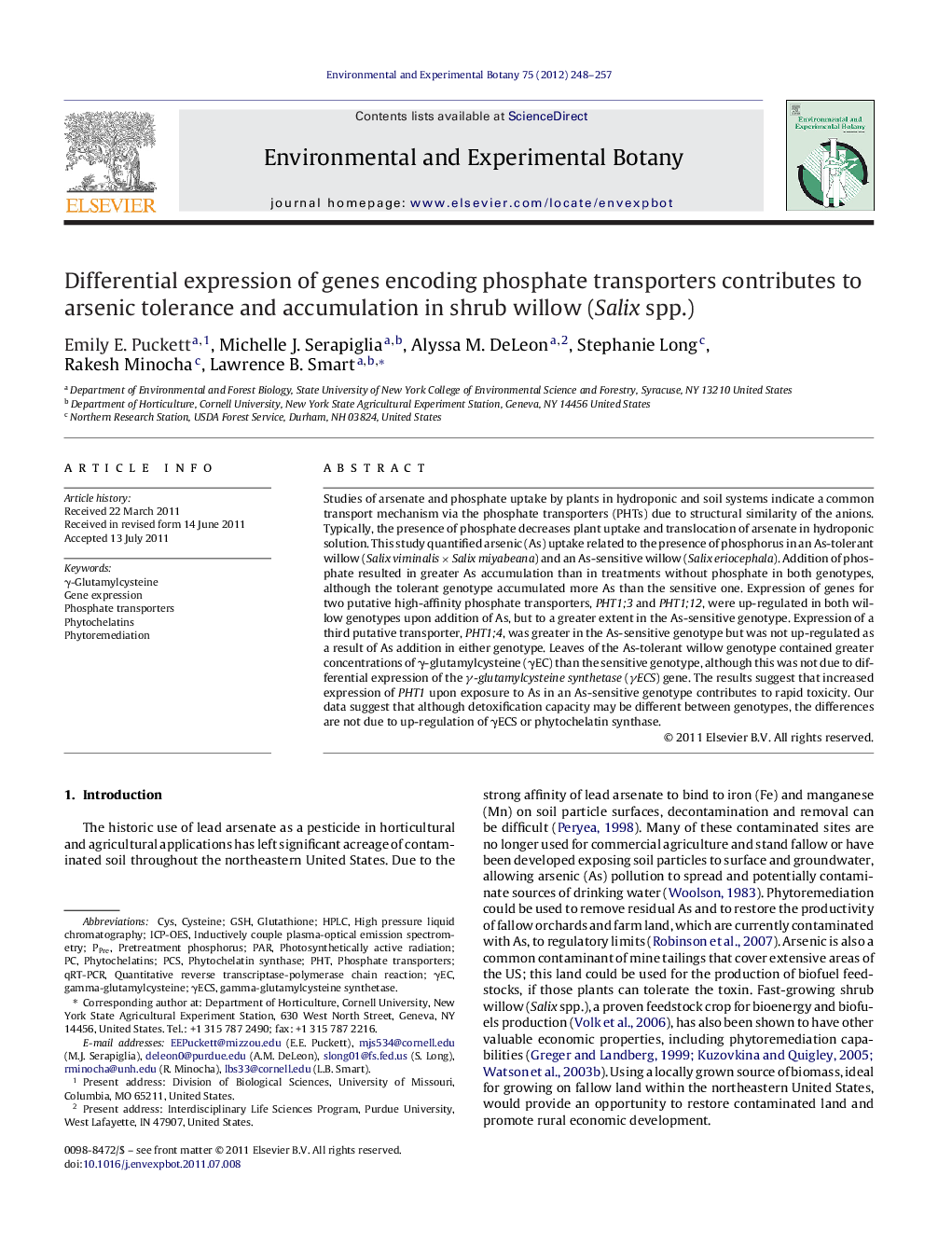| Article ID | Journal | Published Year | Pages | File Type |
|---|---|---|---|---|
| 4554856 | Environmental and Experimental Botany | 2012 | 10 Pages |
Studies of arsenate and phosphate uptake by plants in hydroponic and soil systems indicate a common transport mechanism via the phosphate transporters (PHTs) due to structural similarity of the anions. Typically, the presence of phosphate decreases plant uptake and translocation of arsenate in hydroponic solution. This study quantified arsenic (As) uptake related to the presence of phosphorus in an As-tolerant willow (Salix viminalis × Salix miyabeana) and an As-sensitive willow (Salix eriocephala). Addition of phosphate resulted in greater As accumulation than in treatments without phosphate in both genotypes, although the tolerant genotype accumulated more As than the sensitive one. Expression of genes for two putative high-affinity phosphate transporters, PHT1;3 and PHT1;12, were up-regulated in both willow genotypes upon addition of As, but to a greater extent in the As-sensitive genotype. Expression of a third putative transporter, PHT1;4, was greater in the As-sensitive genotype but was not up-regulated as a result of As addition in either genotype. Leaves of the As-tolerant willow genotype contained greater concentrations of γ-glutamylcysteine (γEC) than the sensitive genotype, although this was not due to differential expression of the γ-glutamylcysteine synthetase (γECS) gene. The results suggest that increased expression of PHT1 upon exposure to As in an As-sensitive genotype contributes to rapid toxicity. Our data suggest that although detoxification capacity may be different between genotypes, the differences are not due to up-regulation of γECS or phytochelatin synthase.
► Total As accumulation was greater in plants grown in +P compared to −P. ► Expression of PHT1 was greater in an As-sensitive than As-tolerant Salix clone. ► Expression of PHT1 was up-regulated upon As exposure. ► Expression of γECS was not different in an As-tolerant and As-sensitive Salix clone. ► As-tolerant and As-sensitive Salix clones had differential thiol profiles in leaves.
